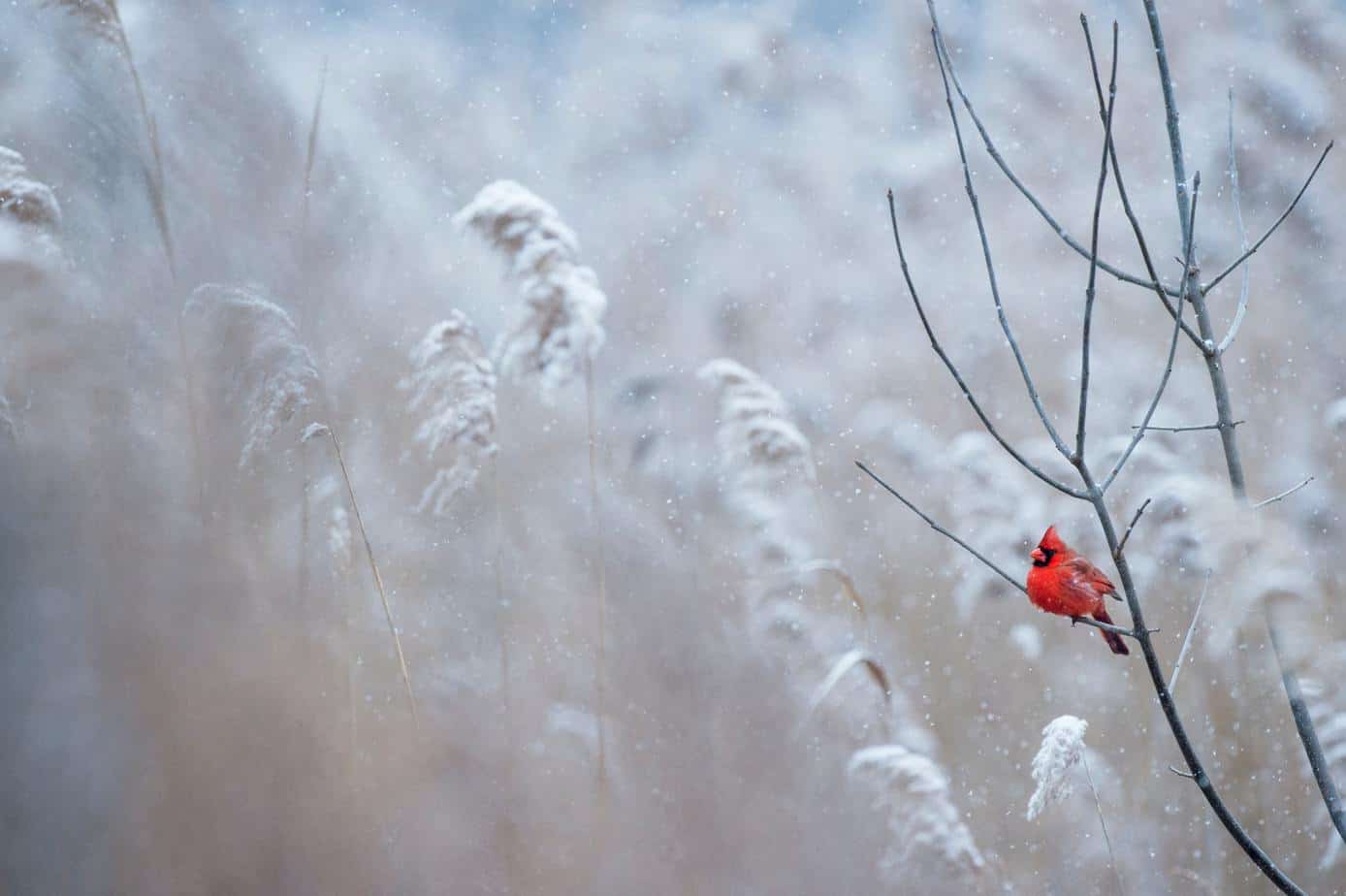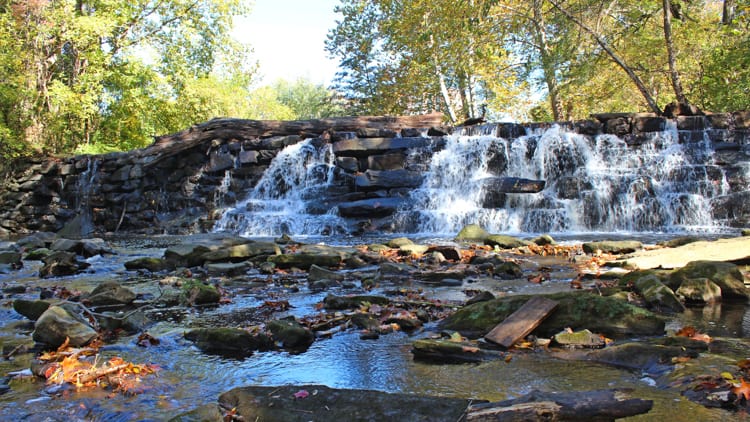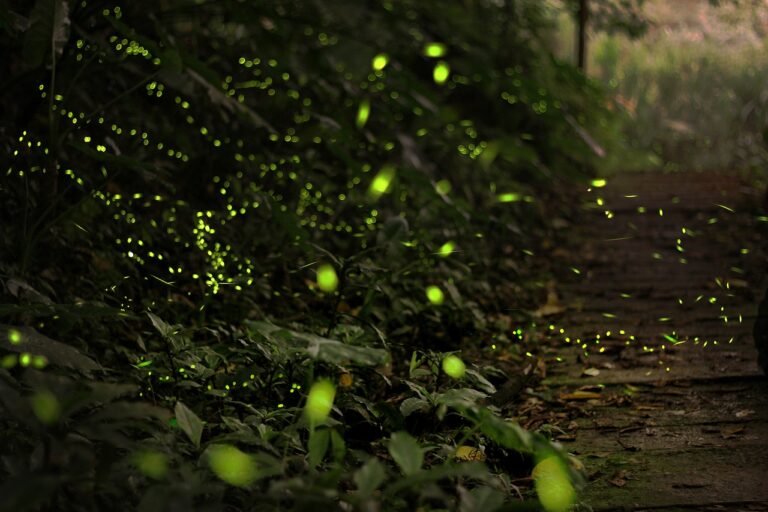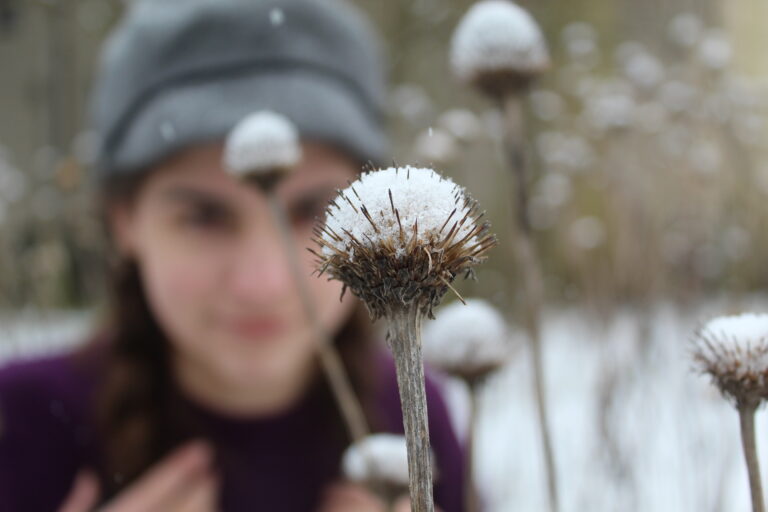Nature Study: Tips & Tricks for Success In a Multiage Homeschool

We know firsthand how fulfilling – and challenging – it can be to manage a homeschool with kids of different ages. Especially when it comes to something as expansive as nature study! Between navigating the muddy puddles with toddlers and satisfying the intellectual curiosity of teenagers, things can get quite overwhelming!
But good news! Nature study is one of the most versatile learning experiences and can be adapted to groups with differing ages. So, let’s dive into how you can make nature study a joyous journey for your homeschoolers – from toddlers to teens!
The Magic of Field Trips
Field trips are a cornerstone of nature study. They don’t need to be an elaborate or expensive! A nearby park, a beach, a community garden, or even your backyard can serve as an excellent classroom! Tailor your field trips to the age and interest of your children. While toddlers could enjoy a treasure hunt for leaves, stones, and acorns, teenagers can get involved in identifying species or studying ecological systems.
Start with Exploration
Nature study is all about nurturing a sense of wonder and curiosity. Before structured learning takes place, it’s essential to let your kids *explore* nature freely. Toddlers and preschool aged kids especially benefit from direct contact with nature. Let them feel the texture of the bark, listen to the birds, observe crawling ants, and yes, jump in those puddles!
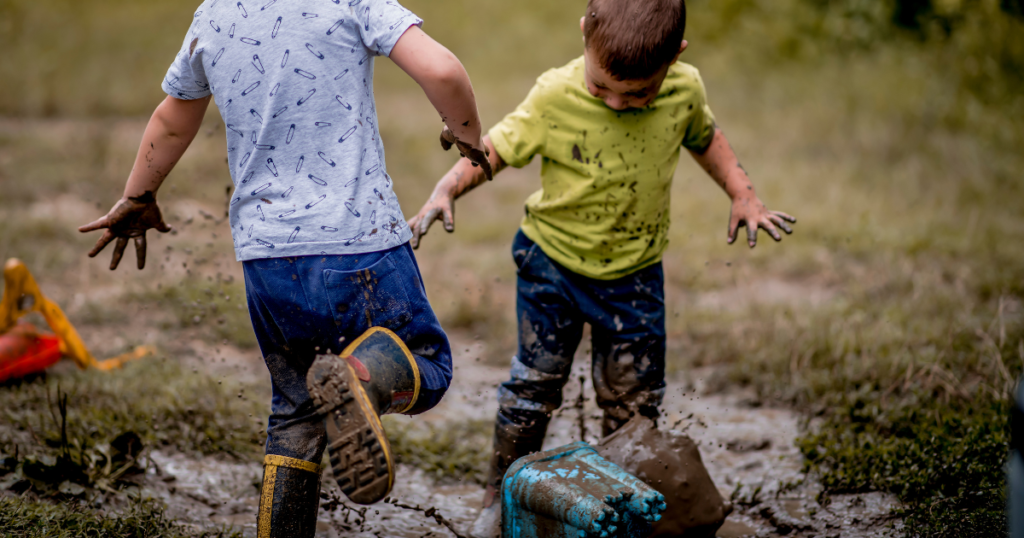
Resources to Rely On
Before heading out on your next field trip, don’t forget to equip yourself (or your home) with field guides, nature journals, binoculars, magnifying glasses, and (for your always-connected teenagers) apps like Seek or Merlin Bird ID. And never underestimate the realm of children’s literature – beautifully illustrated nature-themed books can add wonders to your nature study!
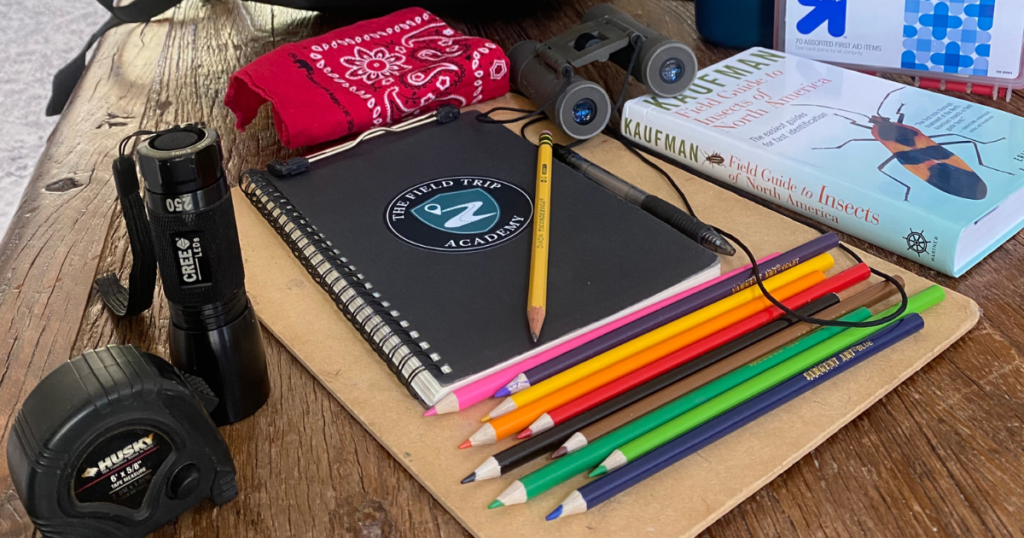
If you’re looking for a done-for-you plan to take nature-focused field trips every month, plus at-home activities, nature journaling, and additional learning resources for lots of ages, check out our Field Trip Science Membership. We make it easy to do nature study in your multiage homeschool!
Harness the Power of Nature Journaling
Charlotte Mason, a staunch supporter of nature journaling, once said, “There is no part of a child’s education more important than that he should lay, by his own observation, a wide basis of facts towards scientific knowledge in the future.” What could be a better way to lay this foundation than to document observations of the world around us?
Start by giving everyone a nature journal of their very own. Even toddlers can tape in collected specimens, make scribbles or paint with their fingers! Older kids can sketch illustrations, jot down observations, or write a narrative inspired by the natural world. By regularly practicing nature journaling, each homeschooler begins to develop a personal connection with nature, fostering a deep appreciation for the beauty and complexity of the earth while laying a strong foundation for future scientific study.
The Handbook of Nature Study
Looking for more structured nature journaling activities? No matter how enjoyable and educational our self-devised nature activities might be, it doesn’t hurt to obtain a little structured guidance. We’re fortunate that such guidance comes in a classic (and FREE) form – Anna Comstock’s “Handbook of Nature Study“.
Her hefty tome is nothing less than a treasure trove for anybody wishing to explore nature. Nearly a century after it was first published, the “Handbook of Nature Study” remains an indispensable resource for nature education. It covers an astounding range of topics – birds, insects, flowers, trees, air, weather – you name it!
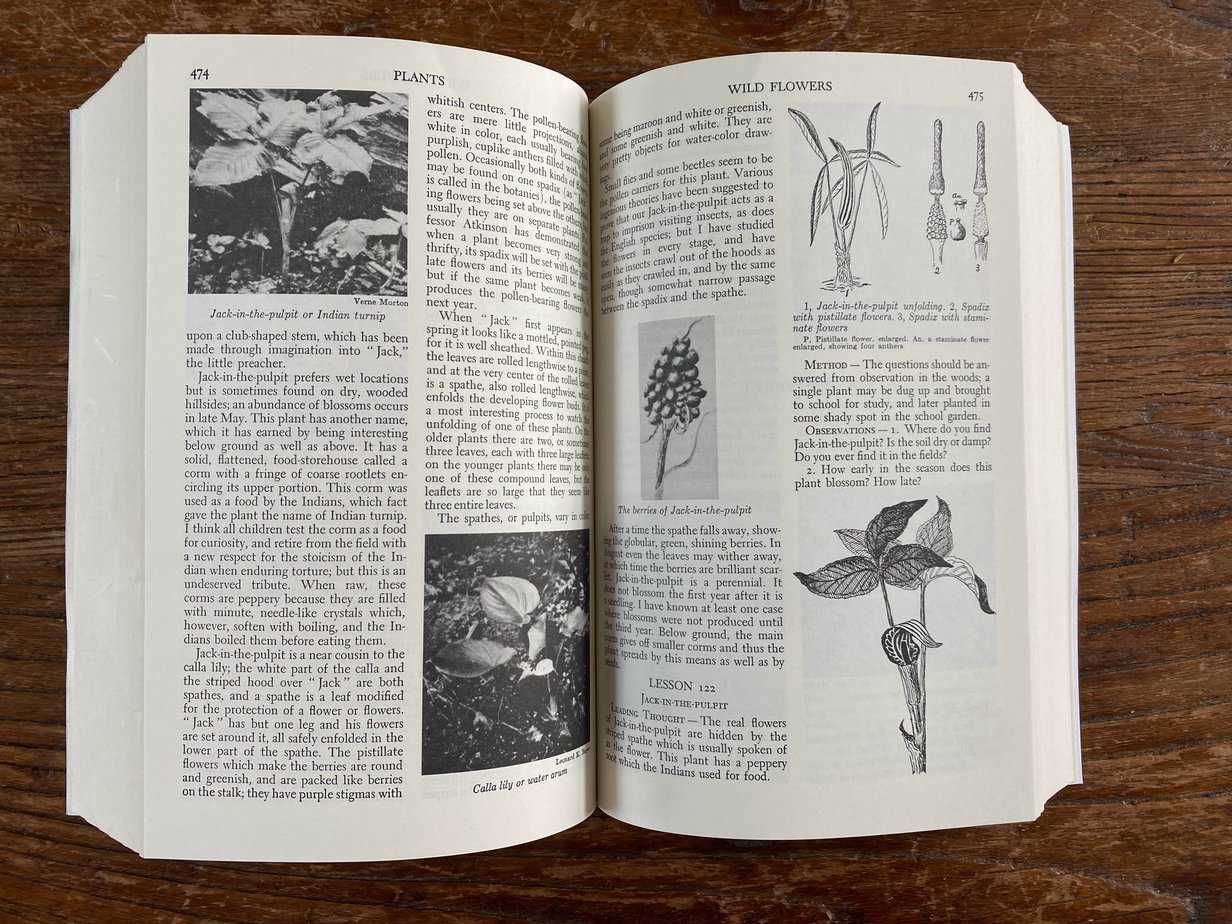
The best part about this book is its approach. It doesn’t reduce nature study to mere observation but instills a deeper understanding and appreciation of nature. Each section provides a blend of scientific facts and focused observations which foster curiosity rather than memorization. The book is a unique source that allows children (and parents!) to learn about nature in organic and experiential ways.
Another remarkable aspect of the “Handbook of Nature Studies” is that it’s not confined to a particular age group, making it an excellent choice for multiage homeschools like yours. Your younger kids will find the simple observation activities accessible, while older kids (and adults too!), will love diving into the in-depth studies.
Scaffold Nature-Focused Activities for Multiple Ages
A multiage homeschooling setup also offers the opportunity for siblings to learn with and from one another. Scaffolding the same core activity for different ages can be a huge help in lessening your workload as a parent, too! Say, during a nature walk, your youngest ones can engage in a ‘color hunt’, your primary-school-aged kids can categorize nature finds into ‘living’ and ‘non-living’, and your teenagers can hypothesize about food chains or symbiotic relationships based on their observations. This way, everyone is learning with the same focal point but at their own cognitive level!
Need some advice on how to plan field trips that work for a wide range of ages? Check out our blog post, “10 Tips on How to Plan a Science Field Trip” for lots of great ideas!
Consistency Is Key In Nature Study
As tempting as it might be to pack up nature studies until the weather is “nice”, remember, consistency is key. Observing seasonality, weather patterns, and experiencing the outdoors in varying conditions imparts invaluable lessons kids would otherwise miss. So, gear up and get out as regularly as possible!
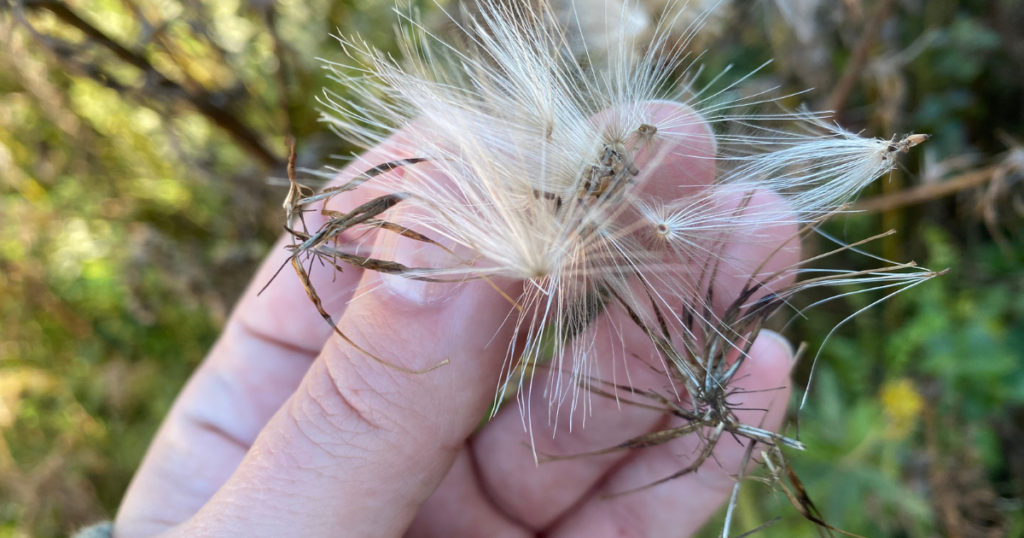
Need some ideas on how to do nature study in less than “ideal” weather with your homeschoolers? Check out our blog post, 10 Simple Ideas for Homeschool Nature Study in Cold Weather to get the ideas flowing. We also have some free and inexpensive nature study resources in our Digital Marketplace if you want more help!
Nature Study Reflection and Extended Learning
A vital component of nature study is right after the exploration phase – the reflection time. Going through your nature journals together, discussing the day’s discoveries, the surprises and learnings opens up a world of deeper understanding. In fact, harnessing these reflections can be a fantastic springboard into launching additional home-based learning activities and really maximize the field trip experience.
During your field trip debrief, pay close attention to your children’s observations, their sketches, and points of interest. There might be patterns that could be further explored, species that can be researched on, or phenomena that may inspire a science experiment!
This is the time to introduce pre-screened educational videos, shared or individual reading of related books, conducting labs, or even crafting models. And guess what, in addition to adding layers to their knowledge, these activities also subtly enhance various skills – be it research methodology, critical thinking, creativity, or scientific observation. In our Field Trip Science Membership, we give families at-home extension activities and curated “going further” resources every single month!
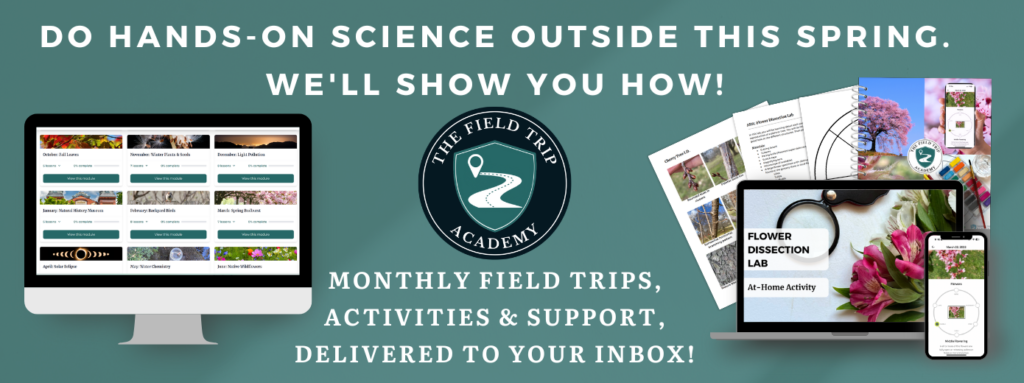
By leveraging these casual post-field trip reflections, what you’re doing is extending the life of that single excursion. The learning doesn’t stop as soon as you step back into your home. In fact, it’s just beginning!
So, next time you sit down for a casual chat about your nature study trip, be ready to turn on your ‘educator eyes’. Look out for those nuggets that can potentially translate into additional learning adventures! Expand those horizons, let the natural curiosity guide, and watch how even a mere nature walk develops into a robust educational experience.
Bringing Nature Study Home
Of course, our nature studies wouldn’t be as immersive or extensive if we didn’t bring a little bit of the outdoors back with us. Let’s talk about another fantastic practice which boosts the learning experience – setting up a nature study table at home.
Creating a corner in your house dedicated to nature exploration can further cultivate your children’s interest and respect for the natural world. This is the spot where the petals, leaves, twigs, shells, or rocks they’ve found can have a special place. They serve as reminders of your field trips and can trigger lots of ongoing research and exploration.

In addition to your children’s findings, equip the table with some tools for interaction. A magnifying glass, a naturalist microscope, some sketch paper and watercolors or colored pencils, a couple of clipboards, and age-appropriate field guides or nature books can be fantastic additions.
The idea is to create a space that encourages hands-on learning, sparks questions, nurtures creativity and allows kids to dig deeper into their observations. It’s not about imitating a mini science lab, but more about creating an invitation to explore. Check out our blog post, “Nature Study: How to Make Your Own Birdwatching Station” for some inspiration.
This nature study table doesn’t require constant supervision. Once curiosity is cultivated, let your kids take the lead. Be prepared to find them lingering around the table, flipping through a field guide or sketching a feather in meticulous detail. It’s so rewarding to watch learning happen in a natural, self-directed way!
Time to Get Started!
Who knew learning could be so much fun? With a little planning and a ton of enthusiasm, nature study for your multiage homeschool can be an enjoyable, enlightening journey. So, let’s grab those field bags, step outside, and let the grandeur of nature inspire our little (and not-so-little) ones!
Remember, it’s less about the perfection of coordinating a flawless outdoor lesson, and more about cultivating an atmosphere of curiosity, exploration, connection, and certainly loads of laughter. Happy homeschooling!




